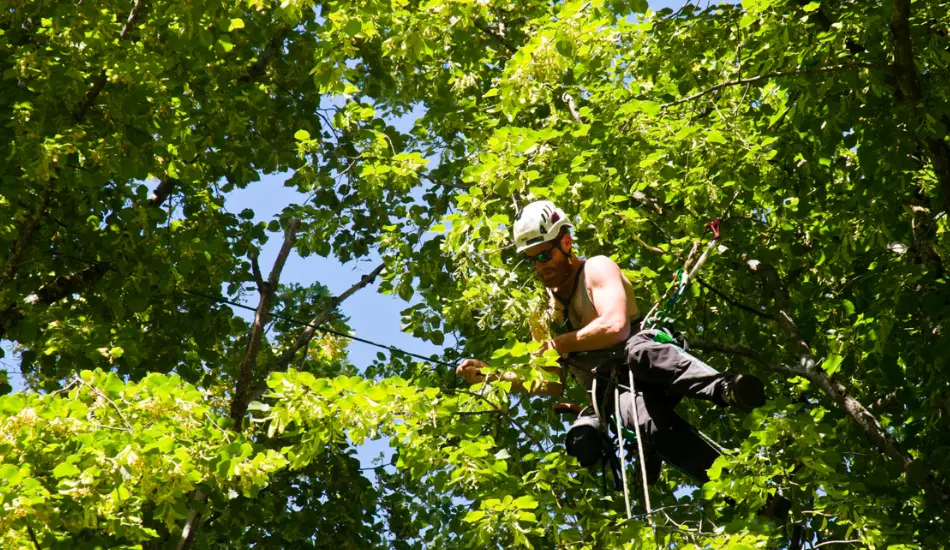Tree topping services are a critical aspect of tree care that involves trimming the upper branches of a tree to promote healthy growth and enhance its aesthetic appeal. However, understanding the right timing for this process is essential for achieving optimal results. Choosing the best time of year for tree topping can significantly affect a tree’s health and recovery. Timing plays a crucial role in minimizing stress on the tree and ensuring that it can rebound effectively from the topping process.
The Seasonal Considerations for Tree Topping
Tree topping is best performed during specific times of the year, primarily in late winter to early spring. This timeframe coincides with the tree’s dormant phase, which is crucial for several reasons. During dormancy, trees conserve energy and focus on root development rather than leaf and branch growth. By scheduling tree topping services during this period, arborists can minimize the stress inflicted on the tree, allowing it to recover more efficiently once it resumes growth in the spring.
Late winter to early spring is also advantageous because it allows for the removal of excess weight from the tree before new growth begins. When trees start to leaf out, they can become heavier due to the new foliage. If topping is done before this period, it reduces the risk of broken branches and potential damage during storms or high winds. Additionally, the lack of leaves makes it easier for professionals to assess the tree’s structure and determine the best cutting points, ensuring a clean and precise cut.
In contrast, tree topping during the growing season, typically from late spring to early fall, can lead to various complications. During this time, trees are actively growing, which means that any stress from topping can hinder their development. The open wounds created by cutting branches may take longer to heal, increasing the risk of disease and pest infestation. Furthermore, trees that are topped during their growth phase may exhibit excessive regrowth, resulting in a bushy appearance that is undesirable for many homeowners.
The Impact of Weather Conditions
Weather conditions also play a vital role in determining the best time for tree topping. It is essential to avoid periods of extreme temperatures, whether hot or cold. In winter, while trees are dormant, extreme cold can lead to frost damage if branches are cut. Similarly, high temperatures during the summer can exacerbate stress on a topped tree, making it difficult for the tree to recover.
Ideal weather for tree topping services involves moderate temperatures and dry conditions. Dry weather is particularly crucial because it allows for better healing of the cuts made during the topping process. Moisture can contribute to the spread of fungal infections, which can severely affect the health of the tree. A calm day with little wind is also preferable, as this ensures the safety of the workers and minimizes the risk of accidents during the cutting process.
Factors to Consider Before Tree Topping
While understanding the best time of year for tree topping is important, several other factors should be taken into consideration before proceeding with this service. The species of the tree is a significant determinant of when to perform topping. Different tree species respond differently to topping, and some may not tolerate it well. For example, hardwood species like oak and maple generally handle topping better when done in late winter, whereas softwoods may require different timing. Consulting with a certified arborist can provide clarity on the best practices specific to the tree species in question.
The overall health and condition of the tree should also be evaluated before deciding on the timing for topping. Trees that are stressed or suffering from disease may require a different approach than healthy trees. In some cases, it may be more beneficial to focus on health improvements through other methods, such as pruning or trimming, rather than topping. An arborist can assess the tree’s health and recommend the most suitable approach to maintain its vitality.
Lastly, consider the surrounding environment and how tree topping may affect neighboring plants, structures, and wildlife. Trees that provide habitats for birds or other animals should be treated with special care. Additionally, if the tree is situated near power lines or buildings, professional guidance is essential to ensure that topping does not create future hazards.
Conclusion:
Choosing the best time of year for tree topping is a crucial decision that can influence the long-term health and appearance of your trees. The ideal timeframe is typically late winter to early spring, as this allows trees to heal effectively during their active growth phase. Weather conditions and the specific characteristics of the tree species also play a significant role in ensuring successful outcomes.
When planning for tree topping services, it is advisable to consult with experienced arborists who can offer expert advice tailored to your trees’ needs. These professionals will assess the trees and provide recommendations for the best timing and methods to promote healthy growth and ensure safety. Ultimately, careful planning and consideration can lead to enhanced tree vitality and beauty in your landscape.



